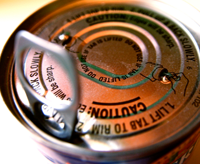Approximately 27% of Americans are obese and in 2010 69% of Americans were considered overweight or obese. Even more sobering, in 2012, more than one third of children and adolescents were overweight or obese. The American Heart Association projects, 154.7 million American adults are either overweight or obese. Minorities are more likely to be obese and that trend doesn’t seem to be changing. Despite the First Lady’s Get Up and Move campaign, America’s weight problem persists.
Perhaps the causes of obesity are more diverse than just genetics, lifestyle and diet. The three most known factors related to obesity are critically important, and an emerging fourth contributor – toxic chemicals– can be another important part of reducing and preventing obesity in the future. Toxic chemicals that act as hormone disruptors can mess with our metabolism and create an imbalance in our hormones.
“Obesogens”
A new class of chemicals being called “obesogens” has interesting science showing this is something we should be paying attention to. What happens is our bodies mistake certain synthetic chemicals used in plastics, food, wrappers, and fragrances, and many more items, for naturally occurring hormones that regulate the production and storage of fat cells. We talked about the link between toxic chemicals and obesity back in 2010, and since then new science has emerged, although more research needs to be done. Here’s a summary from our fact sheet.
Endocrine-disrupting chemicals that may be linked to obesity include:

It is a hormone disrupting chemical that is used to make polycarbonate plastic water bottles, the linings of metal food and soft-drink cans, thermal receipt paper, dental sealants and a variety of other products. Studies show that mice and rats fed low doses of BPA during early development became more obese as adults than those that weren’t fed the chemical. BPA leaches from food and beverage containers into what we eat and drink.

They are plasticizers found in PVC tubing, plastic, cosmetics, shampoos, soaps, lotions, lubricants, paint, pesticides, fragrances and more. One study linked a type of phthalate that leaches into processed food with abdominal obesity and insulin resistance in men.

It is a commonly used weed killer found to contaminate drinking water supplies, and exist as residue in food. After noticing an apparent overlap between areas where the weed killer is used and the prevalence of obesity, researchers conducted animal studies of the effects of low doses of atrazine. The findings suggest that atrazine may contribute to the development of insulin resistance and obesity, especially when the exposure is associated with a high-fat diet.

It is used to make non-stick cookware, found in grease-proof food packaging, and stain-proof coating on clothing and carpeting. Several studies show that PFOA exposure results in reduced birth weight followed by weight gain after puberty. Check out the fact sheet, “Chemicals and Obesity” from the Institute for Agriculture and Trade Policy organization.
Bruce Blumberg a developmental biologist at the University of California at Irvine found that mice exposed to tributyltin, a toxic chemical found in some vinyl, paint, wood finish, wood pulp, and disposable diapers to name a few gained more weight than mice not exposed to TBT. In a Men’s Health Journal piece, “What Makes Us Fat?: Toxins Cause Weight Gain,” Blumberg stated that he believes BPA should be banned outright, and is diligently working to develop safer chemicals.
Environmental Justice
With minorities being more vulnerable to obesity and more likely to reside in fence-line communities the environmental justice aspect of this issue cannot be ignored. As we stated earlier, a variety of factors can contribute to weight gain and therefore require a multi-pronged solution. Since low-income communities of color have a higher rate of exposure to toxic chemicals and have a higher rate of obesity, there may be an important opportunity to reduce exposures to those chemicals. In addition, it’s the right thing to do. This issue is clearly complex. Low income communities face other challenges related to obesity including a lack of access to healthy fresh food, social stressors, a lack of time to cook family meals, inadequate access to preventative health care and more. But if we can remove one piece of the puzzle while working on systemic change in the other areas, we should. Jose Bravo from the Just Transition Alliance a valued coalition partner said it well:
“In communities of color and low-income neighborhoods where there was a history of toxic waste dumping, polluted air, and lax enforcement of environmental regulations, people started making the connection between a toxic environment and high incidence of cancer, asthma, and other health problems.”
More research needs to be done on chemicals linked to obesity and insulin resistance. We need more resources and action for communities facing multiple threats when it comes to obesity. The complexity of this issue underscores the dire need for Congress to make sure reform of our toxic chemical laws protects public health.
Join our email list for tips and action alerts. Together, we’ll fight for real reform of safer chemicals.





